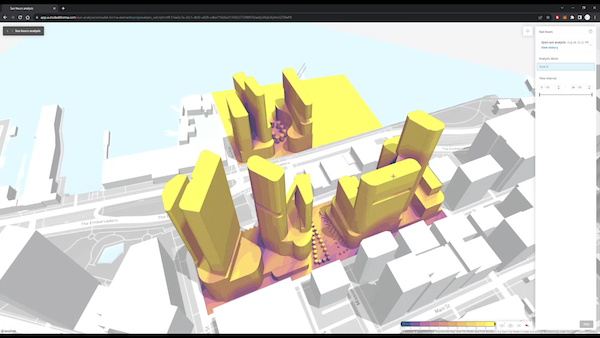
Ongoing growth of electric vehicles (EVs) has created a flurry of infrastructure activity to support those vehicles. A variety of organizations in the U.S. and around the world are busily expanding EV manufacturing facilities and charging networks, seeking to stay ahead of demand for EVs and charging options.
Along with the challenge of adequately expanding the EV infrastructure, industry professionals are also facing other challenges, such as potential impacts from the additional weight of EVs and environmental issues that might offset the benefits of EVs. The challenges appear manageable, but EV infrastructure players are keeping a watchful eye on key trends and the burgeoning data generated by EV growth.

Image source: Darunrat/stock.adobe.com.
Growing Numbers
More than one in five cars sold worldwide in 2024 is expected to be electric, according to the International Energy Agency (IEA). Other sources noted a slight slowdown in EV growth in late 2023, but the total number of EVs is still growing, a trend expected to continue. IEA’s latest Global EV Outlook predicts total electric car sales will reach $17 million by the end of 2024. By 2030, almost one in three cars on the roads in China will be electric, and almost one in five in both the U.S. and Europe, according to IEA projections.
Along with the growth in EVs, charging infrastructure for plug-in EVs is also expanding. In the U.S., the total number of public charging stations reached 180,000 in May 2024, according to the Joint Office of Energy and Transportation, a collaboration between the U.S. Department of Energy and the U.S. Department of Transportation. “We are 35% of the way toward the Biden Administration goal of 500,000 chargers by 2030 and ahead of schedule to reach this target,” said a Joint Office spokesperson.

As of May 1, 2024, the U.S. had approximately 180,000 public EV charging ports. Image source: U.S. Joint Office of Energy and Transportation.
The U.S. public totals include both Level 2 alternating current (AC) chargers and direct current fast charging (DCFC) equipment for plug-in EVs. Level 1 chargers, which provide charging through a common residential 120-volt (120V) AC outlet, are not included in the public totals. Fuel cell electric vehicles (FCEVs) powered by hydrogen are in the early stages of implementation and are also not included in these statistics.
Funding Charging Infrastructure
Much of the U.S. funding for charging stations stems from the 2021 Infrastructure Investment and Jobs Act, which established the National Electric Vehicle Infrastructure (NEVI) Formula Program, allocating $5 billion in formula funding to states. The Charging and Fueling Infrastructure (CFI) Discretionary Grant Program provided another $2.5 billion to a wide range of applicants, including cities, counties, local governments, and tribes.
At the state level, California has implemented the most aggressive charger program, with a goal of 250,000 chargers by 2025.This includes 10,000 DCFC chargers, a goal that was met in 2023. According to Corey Permann, manager of the Passenger Electric Vehicle Infrastructure Branch of the California Energy Commission, the state is well on its way of meeting the overall goal. “We anticipate sufficient funding to reach the 2025 goal,” Permann said.
As public and private organizations analyze where to locate charging infrastructure, coordination with existing infrastructure is often a key factor. According to NEVI guidelines, access to fast charging stations is to be provided every 50 miles along more than 80,000 miles of designated alternative fuel corridors (AFCs). The CFI program also supports infrastructure along corridors and within communities where people live, including locations such as libraries, churches, town centers, and community centers. “We’re bringing the EV network where people live and work,” said the Joint Office spokesperson.
California and other states are also looking beyond highway corridors and public facilities for charging locations. “[The CEC’s role] includes understanding gaps in access to public charging,” said Bridey Scully, CEC energy commission specialist. “Once we identify gaps, we can use public funding to accelerate deployment of EV chargers, especially in areas the private sector is not expected to focus,” such as low income and disadvantaged communities, added Scully. To encourage public and private involvement, the CEC offers competitive funding grants focused on specific sectors that lack charging opportunities.
Impacts on Existing Infrastructure
In addition to building EV charging infrastructure, public and private organizations are eyeing potential EV impacts on existing infrastructure and other facilities. Primarily due to the weight of EV batteries, EVs outweigh equivalently sized gas-powered vehicles by 30% in some cases, which can adversely impact public and private facilities such as roads, bridges, and parking structures, according to Jim McDonald, a structural engineer and partner at consulting firm Simpson Gumpertz & Heger. McDonald co-authored an article in Structure magazine earlier this year focusing on potential impacts of EV weights on parking structures.
Because of the growing number of EVs, changes may be needed in the way parking structures and other facilities are designed and maintained, McDonald said. “[Engineers and other professionals] need to act today on figuring out how we’re going to develop the infrastructure to support what we need tomorrow,” he noted.

An average EV sedan could weigh 30% more than an equivalently sized gas-powered vehicle. Image source: Structure magazine.
The increased weights of EVs may warrant revisions to current building codes for parking structures, according to McDonald. For example, a 2002 change to an American Society of Civil Engineers standard (ASCE 7-02) that reduced live loads for parking garage floors may need to be reversed to account for heavier vehicles, he said. Maintenance and repair costs are also likely to increase from increased wear on surface coatings, concrete cracking, and penetrations of EV charging equipment into parking structure decks, McDonald added.
Loads on public roads and bridges are other areas warranting review, though not specifically addressed in McDonald’s studies. Designs of roads and bridges are influenced more by heavy truck traffic and require different design approaches.
The U.S. Joint Office of Energy and Transportation did not provide specific details on the effect EVs might have on road and bridge design, but offered the following statement: “Safety is the top priority for the transition to a clean transportation future. Decades of research have gone into our highway safety systems. Just as the vehicles of today differ from those from decade’s past, these safety systems, including guardrails, will continue to evolve and adapt to newer technologies and innovation. The Joint Office is working across DOE and DOT to ensure that we are considering how to make the transition to an electrified transportation system frictionless and safe for all riders and drivers.”
A spokesperson for the Federal Highway Administration, which is part of the U.S. DOT, offered an additional statement: “FHWA funds are used to support research for infrastructure safety and to pay for the installation of the safest and most technologically advanced roadside safety hardware. FHWA will continue to review the current studies underway to understand the research and impacts of newer vehicles on the road.”
The Joint Office also stressed the importance of designing for EV charging at the outset of infrastructure projects. “The ‘dig once’ concept holds that it’s more affordable and effective to install EV charging infrastructure when building a project, rather than having to dig up concrete and lay conduit or wiring later on, after the initial project is completed. Many state and local governments have added EV provisions to their building codes, local ordinances, and zoning requirements, that can help residents gain access to charging,” said the Joint Office spokesperson.
Manufacturing and the Environment
Manufacturing of EVs, batteries, and other components has also generated a whirlwind of construction activity, along with some new environmental challenges. According to U.S. Dept. of Energy statistics, new U.S. electric vehicle component and assembly plant investments announced under the Biden Administration include more than 150 new or expanded sites for EV assembly and EV component or charger manufacturing, with a value of more than $35 billion. New U.S. battery manufacturing and supply chain investments include more than 250 new or expanded minerals, materials processing, and manufacturing facilities worth more than $120 billion.
While creating numerous jobs and generating positive economic activity, the manufacturing processes can also adversely impact the environment. As EV batteries require a variety of minerals such as lithium, cobalt, and nickel, battery production can release toxic fumes and tailings during the mining process, and consume large volumes of water and energy.
Due to scarcity of these minerals and difficulty in obtaining mining permits in the U.S., most of the minerals in U.S.-made batteries are imported from other nations, requiring additional energy to import the materials. Questions have also arisen about working conditions in some locations. According to a Yale University report, approximately 70% of the world’s cobalt comes from the Democratic Republic of Congo, where an estimated 40,000 of the 255,000 cobalt mining workers are children, some as young as six years old. The mining and refinery processes also generate significant greenhouse gases (GHGs) due to heavy reliance on fossil fuels to produce electricity and drive heavy machinery.
Additional energy is also required to charge EVs, potentially generating more GHGs. Considering all these factors, the EV manufacturing process and initial operation period generally consumes more energy than that of a gas-powered vehicle and generates more GHGs; however, industry experts say EVs become more environmentally beneficial after a certain period of time. A variety of models have been developed, with numerous variables and assumptions, resulting in different “break-even” points where EVs are responsible for lower levels of GHGs than comparable gas-powered vehicles over the vehicle life cycle. An analysis by Emissions Analytics determined break-even points for EVs could range from one to 24 years, depending on distance driven per year and other factors. For average distances driven in the UK, the break-even point would occur in year 5.
 EVs produce more GHGs during manufacturing, but stacked up against their fuel-using vehicles, they break-even fairly quickly depending on annual mileage. If a driver’s annual mileage is 5,000–10,000 miles, the break-even point would be 5 years. Image source: Emissions Analytics.
EVs produce more GHGs during manufacturing, but stacked up against their fuel-using vehicles, they break-even fairly quickly depending on annual mileage. If a driver’s annual mileage is 5,000–10,000 miles, the break-even point would be 5 years. Image source: Emissions Analytics.
While debates will likely continue over the environmental benefits of EVs, the adoption of EVs is clearly on the rise around the world. This provides a wealth of opportunities for AEC professionals to participate in building sustainable infrastructure, though it may also require a paradigm shift as new standards, assumptions, and stakeholders shape future practices.
Andrew G. Roe
Cadalyst contributing editor Andrew G. Roe is a registered civil engineer and president of AGR Associates. He is author of Using Visual Basic with AutoCAD, published by Autodesk Press. He can be reached at editors@cadalyst.com.
View All Articles




Searching for more information about Architecture, Infrastructure, and Construction?
Click here!